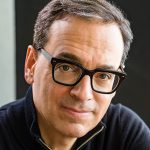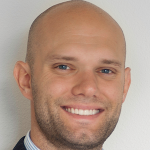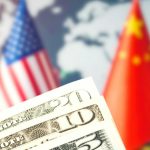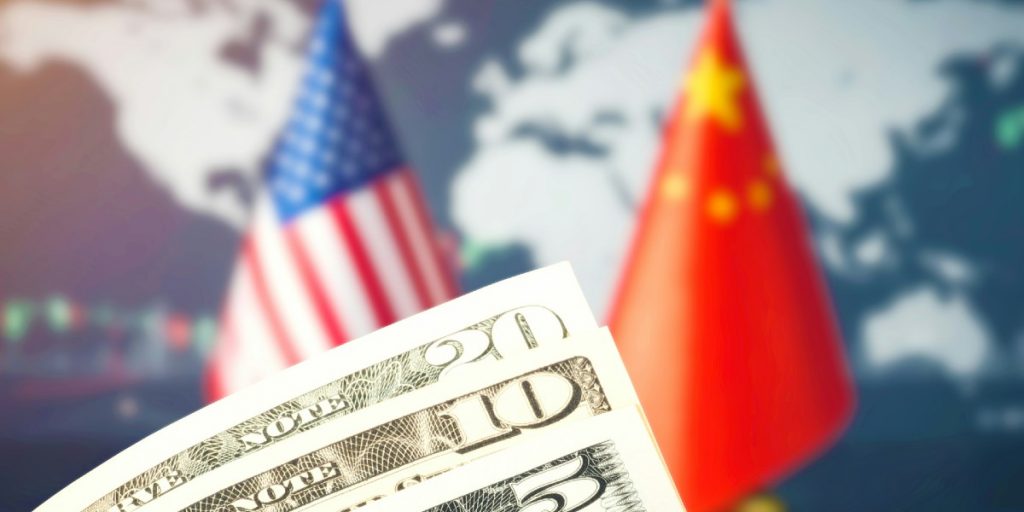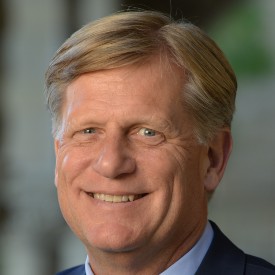Below, co-authors Scott Keller, Carolyn Dewar, Vikram Malhotra, and Kurt Strovink share five key insights from their new book, A CEO for All Seasons: Mastering the Cycles of Leadership.
Scott is a Senior Partner at McKinsey & Company, where he co-leads their CEO Excellence practice. He has published 10 books and over 80 articles on leadership, and has been a guest lecturer at many of the world’s leading business schools.
Carolyn is a Senior Partner at McKinsey & Company. She has published over 20 articles in the Harvard Business Review and the McKinsey Quarterly. She is also a frequent keynote speaker.
Vikram is a Senior Partner at McKinsey & Company, where he has worked since 1986. He has served on McKinsey’s Board of Directors and as McKinsey’s Managing Partner of the Americas.
Kurt is a Senior Partner at McKinsey & Company and a member of the firm’s Board of Directors. He also leads the company’s global CEO services practice.
What’s the big idea?
A leadership journey evolves like the seasons: spring, summer, fall, and winter. By understanding the unique demands of each stage, you can direct your organization with impact and position yourself for success before, during, and beyond your tenure as CEO.
Listen to the audio version of this Book Bite—read by Scott—below, or in the Next Big Idea App.

1. Leadership has four seasons.
We often think of leadership as a steady march forward, one long journey. But we found that the CEO role, and really, any leadership role, unfolds in four distinct stages, just like seasons of the year. Let’s take a walk through each:
- Spring is about stepping up to the role.
This is the season before you even become CEO, the two to three years leading up to the role. This is when you should be going the final mile in gaining the experience, developing the skills, and demonstrating the leadership qualities that position you as a natural choice for CEO when the time comes for the board to choose. - Summer is about starting strong in the role.
The first two years in the role are critical. You can’t be hesitant in this season. The willingness and ability to take bold action matter most here. You set direction, shift culture, and signal who you are as a leader. - Fall is about staying ahead in the role.
This is the long middle stretch. Now you’ve got to avoid complacency, both in yourself and your team. That means creating successive “S-curves”—waves of innovation and performance that keep things fresh and forward-moving. - Winter is about “sending it forward” as you hand over the role.
In this final stage, you’re preparing to hand over the reins to your successor. That means recognizing when it’s time to leave, navigating the transition gracefully, and discovering your next chapter.
2. Each season has unique blind spots.
Any leadership role is prone to certain blind spots. But for CEOs, the stakes are especially high. To understand where leaders typically misjudge their capabilities and performance, we conducted a large-scale survey comparing how CEOs perceived themselves versus how their boards and executive teams rated them. The ratings were made across six dimensions of leadership:
- Setting direction
- Aligning the organization
- Mobilizing leaders
- Engaging the board
- Connecting with stakeholders
- Managing personal effectiveness.
Our first finding reminded me of something known in psychology as the “Lake Wobegon Effect.” Lake Wobegon is a fictional town where, allegedly, “all the women are strong, the men are good looking, and the children above average.”
CEOs, on average, seem to be inhabitants of Lake Wobegon. They consistently rated themselves higher than others did: 100 percent of the time compared to their direct reports, and 80 percent of the time compared to their boards. The remaining 20 percent is early in the role when boards are still optimistic and CEOs are still finding their footing.
This was interesting, but perhaps not entirely unexpected. After all, 88 percent of U.S. drivers put themselves in the top 50 percent of good drivers on the road, and when couples are asked to estimate their individual contributions to household work, the combined total routinely exceeds 100 percent.
When we dug deeper, we also saw clear and distinct season-specific blind spots:
- In Summer (starting in the role), new CEOs tend to overestimate their ability to shift culture. They have bold visions, but underestimate the difficulty of mobilizing behavior change at scale. Many also overestimate how effectively they manage their own time and energy. As Adena Friedman, CEO of Nasdaq, put it: “I realized I was sprinting a marathon.” Fortunately, she recognized this early and quickly made smart adjustments.
- In Fall (the middle years), CEOs often lose the boldness that marked their early tenure. Having executed their first big moves, they drift from their original vision and become overly attached to past successes. IBM’s Arvind Krishna describes the dynamic well: “People get hung up on the success of old strategies, and they refuse to acknowledge that times have changed.”
- In Winter (when it comes time to send things forward), things get even trickier. Some CEOs hold on too long, playing it safe to protect their legacy. Others swing to the opposite extreme, making risky bets to stay relevant. Team dynamics also suffer as succession politics set in. There’s rightfully a lot of pressure on this season, the same way there is on a baton handoff in an Olympic relay race. A drop is costly and embarrassing, and in the CEO role, you only get one shot at it. As former Caterpillar CEO Jim Owen put it, “In the end, the hardest part about the CEO role is leaving.”
- And what about Spring (the season of preparing for the role)? While we didn’t have survey data here, in our experience, we’ve observed two patterns: The first is that candidates tend to focus more on securing the next role than delivering in their current one, which can prove a knockout punch in the eyes of the board. The second is that they self-promote themselves out of contention. As former Westpac CEO Gail Kelly warns: “Don’t play politics. Don’t undermine people. None of that ends well.”
3. Avoiding blind spots is worth trillions.
What is the real impact of mastering these seasons and avoiding their pitfalls? To find out, we studied 200 of the best-performing CEOs in recent history—leaders who we can analytically show have delivered outsized shareholder returns over long tenures, run ethical companies, inspired their people, and left strong legacies. These CEOs are the best of the best.
These top 200 leaders we identified generated $5 trillion more in economic value than their peers. That’s more than the annual GDP of Germany, which is the world’s third-largest economy. And looking at each season, we found the high levels of value creation were spread across their tenure.
“The best CEOs avoided common blind spots and performed better during all four seasons.”
They didn’t start strong and simply ride the momentum. They didn’t hit some “sophomore slump” which they then found a way to reverse during their middle years. Nor did they move slowly and steadily until the foundation was in place to achieve “hockey stick”–type impact toward the end of their tenure. The best CEOs avoided common blind spots and performed better during all four seasons.
Now that doesn’t mean they didn’t make mistakes. They’ll be the first to admit they did. But they detected their mistakes and corrected them quickly. Like championship coaches, they might’ve lost a game, but they never had a losing season. Sam Hazen, CEO of HCA Healthcare, summarizes the mindset well: “Despite our success over the seven years I’ve been CEO, I still feel like I’m behind. And that creates an internal motor to keep improving.”
4. Success is as much about psychology as it is about skill.
We interviewed 83 of the world’s 200 top-performing CEOs in recent history. To give a sense of who these iconic leaders are, they include Microsoft’s Satya Nadella, Lockheed Martin’s Marillyn Hewson, Merck’s Ken Frazier, JP Morgan Chase’s Jamie Dimon, ASML’s Peter Wennink, and Sundar Pachai from the parent company of Google, just to name a few.
With them, we didn’t just ask about tactics—we used a technique from clinical psychology called laddering to understand the underlying mental frameworks that shape their choices. Here’s the psychology we found that the best had in common during each season:
- In Spring, the most successful future CEOs are driven by purpose and not prestige. They see the role as a starting point, not a finish line. Former Cincinnati Children’s Hospital Medical Center CEO Michael Fisher, who led his organization to become consistently ranked among the best in the country, put it plainly: “If the main reason you want the CEO title is ego, that’s unlikely to be sustainable.”
On the other hand, it is equally unsustainable to let a lack of confidence and conviction hold you back. As former Medtronic CEO and HBS professor Bill George put it, “I find a number of very well-qualified people aren’t good CEOs. They just don’t have the courage.”
- In Summer (starting strong in the role), it’s important to be aware of the dynamic that Brad Smith, former Intuit CEO, describes as, “We all get ten inches taller and our jokes get funnier the day we assume the role.” The best CEOs guard against the hubris that can easily come from this dynamic by actively adopting a servant leader mindset and ensuring they have a group of truth-tellers around them that cut through the reality distortion field that the power of the role creates.
They also stay focused on what Sandy Culter, former CEO of Eaton, calls “Playing Big Ball,” which means spending time on things that no one else can and not getting mired in things that don’t make a difference.
- In Fall (staying ahead in the role), great leaders avoid the anchoring bias, which is when one starts to base future strategies on past success. They do so by periodically analyzing all aspects of their businesses from the outside in, just as they did when they took on the role.
To this end, I love how Michael Dell of Dell Technologies found a novel way (thirty years into his tenure) to prompt his leadership team to take stock and think like outsiders. He told them, “Dell was going to have a new competitor five years from now. This company was going to be in every business that Dell was in, and they were going to be faster, more innovative, and lower cost than Dell, and, as a result, they were going to put Dell out of business.” He followed up this grim prediction by saying, “The way we’re going to prevent this is we’re going to become that company. Because if we don’t do it, it’ll be done to us.” This thought experiment spurred hours of conversation among his leadership team as they rethought the company’s future from the outside in.
- Winter (Sending the role forward) is about knowing when—and how—to let go. Brad Smith of Intuit put it plainly: “You need to decide: do you want to choose the date—or let someone else choose it for you?” In this spirit, great CEOs take the emotional weight of the transition head-on, recognizing that they will lose the relevance, power, and admiration that came with the role. As former U.S. President Harry Truman said after leaving office, “Two hours ago I could have said five words and been quoted in every capital of the world. Now I could talk for two hours, and nobody would give a damn.”
The best leaders not only prepare themselves for this eventuality but also actively embrace the freedom that comes with stepping down. Lastly, they see themselves as institution builders as they hand over the reins. Microsoft CEO Satya Nadella explains what that means when he says, “My dad, a civil servant in India, always used to talk about institution builders as those people whose successors do better than they did themselves. I love that definition. I feel that if the next CEO of Microsoft can be even more successful than I am, then maybe I’ve done my job right. If the next CEO of Microsoft crashes and burns, that may result in a different verdict.”
5. The leadership lessons for each season are timeless.
Many headlines would have you believe that disruption is at an all-time high. But when we analytically compared today’s business landscape to that of 20 years ago—across technology, geopolitics, climate, talent, consumer behavior, and demographic shifts—we found the level of change is remarkably similar. Yes, advances in AI are unprecedented, but so were the advances that led to the dot-com bubble and its subsequent bursting. Yes, geopolitically, there is a lot of change, but that was also true after 9-11. Meanwhile, the Enron scandal had recently rocked the business world, and the EU was undergoing its biggest expansion ever.
“Yes, the world is changing and will continue to do so, but human nature largely isn’t.”
This highlights a final and important potential blind spot that today’s leaders should be cautious of: the generational exceptionalism fallacy. This occurs when those who are living in the “now” mistakenly believe that they are experiencing an unprecedented, high level of change. This misperception leads people to overlook lessons and techniques from the past that could help them navigate the present and shape the future. We believe the risk of this bias affecting today’s leaders is intensified by the media’s tendency to dramatize current events. Yes, the world is changing and will continue to do so, but human nature largely isn’t. Understanding that is essential to being a great leader.
Enjoy our full library of Book Bites—read by the authors!—in the Next Big Idea App:



